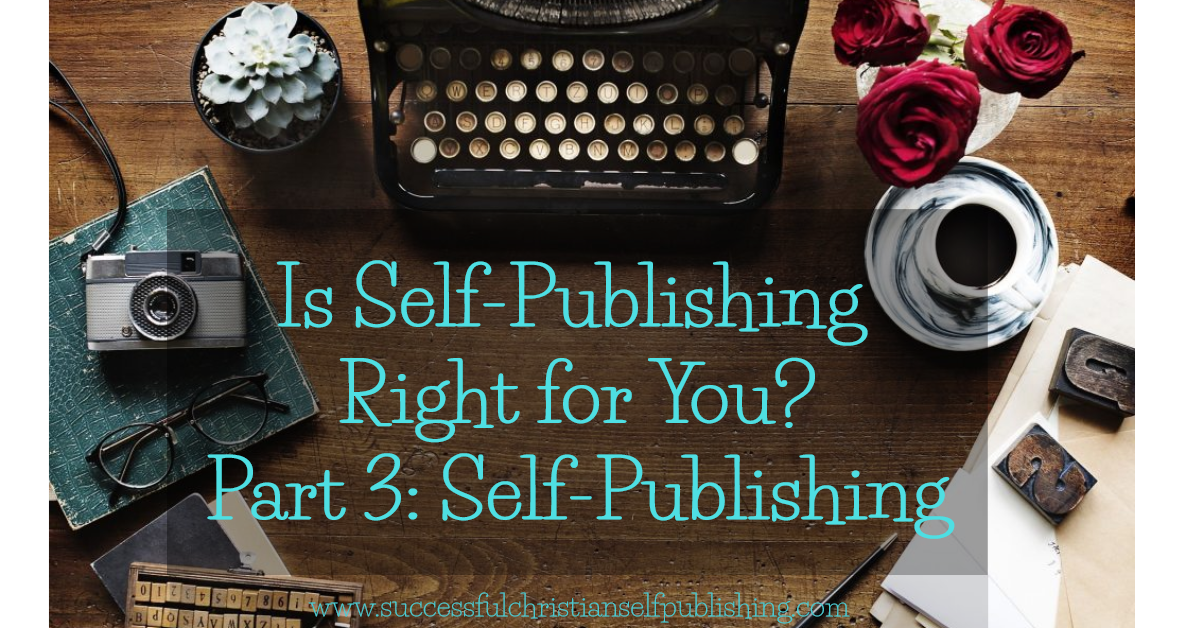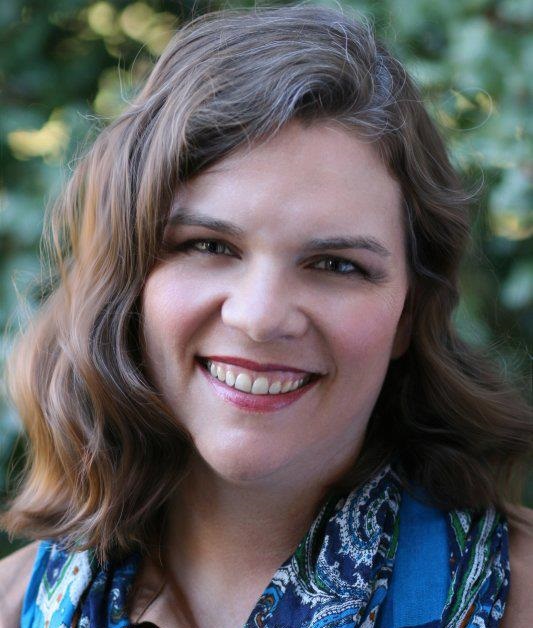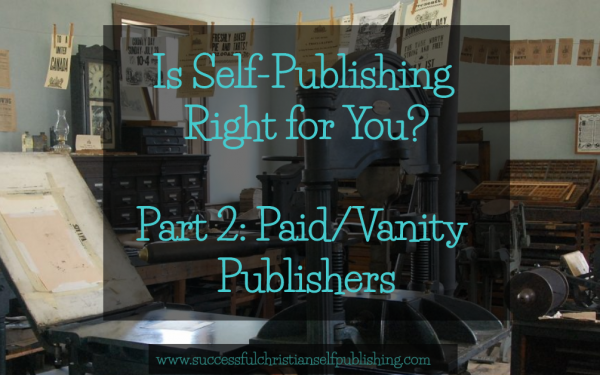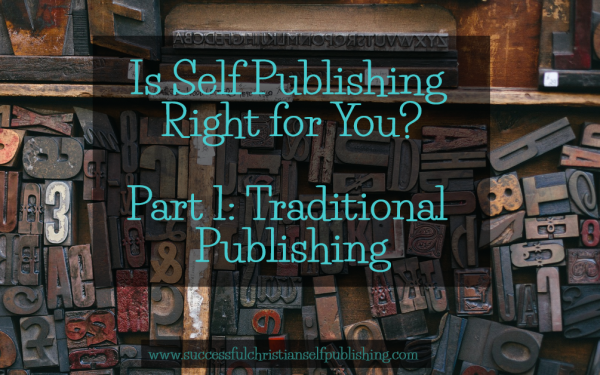Is Self-Publishing for you? Part 3: Self-Publishing

This blog focuses on self-publishing. Self-publishing is not for everyone. It’s probably a really good idea to define exactly what self-publishing is and exactly what self-publishing isn’t to make an informed decision about whether self-publishing is a solution you want to embrace.
There are essentially three types of publishing:
1) Traditional Publishing
2) Paid Publishing
3) Self-Publishing
Each comes with some pros and cons. Each has unique requirements and challenges. It is important to understand and consider these distinctions before moving forward.
Self-Publishing
The options for self-publishing books have greatly widened in recent years due in large part to the effect of technology on the marketplace. The “old” self-publishing model of ten or more years ago involved obtaining your ISBNs and contracting a local printer to perform a print run of a few thousand books which you would then market to distributors and retailers yourself. The combined technological effect of eReaders and print-on-demand technology have largely eliminatedthis model, as well as a number of small printing houses.
Successful self-publishing in the modern context means that YOU — the author — are the publisher.
That means that you own all the rights to your work, forever. It also means you are responsible to professionally edit your manuscript, professionally format and typeset your manuscript, professionally apply artwork such as interior graphics and cover artwork for your manuscript, facilitate some degree of marketing for your manuscript before publication, register your manuscript with government agencies, and ultimately self-publish your manuscript and get it into the supply chain with distributors. Then you are responsible to facilitate additional marketing after your release, and ultimately cut yourself a check based on the royalties your manuscript generated based on sales for which you, and you alone, are responsible for budgetary concerns such as taxes.
You don’t need a literary agent since you are the publisher. You can purchase galley proofs directly from the print-on-demand printer and just as many printed copies of the final product for personal use as you would like to buy from the trade paperback printer.
You can distribute your book in any format and to any sales channel you choose at whatever price and discount you choose to set. You can invest in marketing efforts and use whatever marketing channels you like.
You either have to perform all of this work yourself, or pay a professional contractor to perform this work for you. It comes down to the time and money equation. It takes time and money to make money over time.
What self-publishing is:
Self-publishing is quick. The lag time between completion of your first draft and the release of the final product is hands-down faster than any other publishing model.
What self-publishing is not:
Self-publishing is not quick. Though the lag time between completion of your first draft and the release of the final product is hands-down faster than any other publishing model, it still takes a significant amount of your personal time to complete the necessary work to achieve that release.
What self-publishing is:
Self-publishing is easy. Technology has eliminated a lot of the stumbling blocks between the author and the reader.
What self-publishing is not:
Self-publishing is not easy. Despite technological advances and the relative ease of publishing a book, there is still a tremendous learning curve between self-publishing a book and self-publishing a best selling book.
What self-publishing is:
Self-publishing is the only publishing model that enables you to retain 100% of the royalties paid to you by the distributors (who keep their share, as they keep their share of traditional publishers’ books as well).
What self-publishing is not:
Self-publishing is not a “get rich quick” scheme. Even if you sell hundreds of thousands of books as I have done, there is never an opportunity to sit on your laurels in your mansion counting your gold coins. As the publisher, the income you could realize has to be budgeted responsibly, tithed appropriately, and properly accounted for in terms of taxes you may owe. Done right, you will find you are too busy working to buy that private island and matching yacht you’ve had your eye on.
Pros: You do not need to contract with a literary agent since you are the publisher. Technology has opened the doors so that an individual has access to a wide reach of marketing and distribution outlets. The manuscript is your very own product so it will receive exactly as much personal attention from you as you are willing to invest. You have complete control (freedom) over the entire publishing process from editing to packaging to marketing to alternate formats and foreign rights, film treatments, audio versions and such. You have the ability to issue rapid revisions. You have complete control of the cover, interior formatting, typesetting, and graphics and can change one or all of these elements at any time. The lag time between completion of your first draft and the final release date is rapid. You set the price and discount in every market. You can determine where it is sold. You receive 100% of the royalties. You have the freedom to explore alternative marketing efforts such as joining a box set with other authors.
Cons: The amount of work involved to produce a quality product can seem daunting. There is, without question, a learning curve to self-publish correctly that requires constant research and dedicated focus. The lack of a traditional publisher’s colophon can result in challenges gaining acceptance in the marketplace. Carving out time to accomplish necessary tasks and meet commitments requires investment and tenacity. It takes constant research and staying on top of the market, the ability to adjust your business model as the market changes around you, and the drive to keep doing it even as the market constantly evolves.
Self-publishing model:
1) Author IS the publisher so 100% of royalties belongs to you.
2) Author owns all rights to the work.
![]()

With nearly a million sales, Hallee Bridgeman is aUSA TODAY best-selling and award-winning Christian author who writes action-packed romantic suspense focusing on realistic characters who face real-world problems. Her work has been described as everything from refreshing to heart-stopping exciting and edgy. Hallee has served as the Director of the Kentucky Christian Writers Conference, President of the Faith-Hope-Love chapter of the Romance Writers of America, is a member of the American Christian Fiction Writers (ACFW), the American Christian Writers (ACW), and Novelists, Inc. (NINC). An accomplished speaker, Hallee has taught and inspired writers around the globe, from Sydney, Australia, to Dallas, Texas, to Portland, Oregon, to Washington, D.C., and all places in between. Hallee loves coffee, campy action movies, and regular date nights with her husband. Above all else, she loves God with all of her heart, soul, mind, and strength; has been redeemed by the blood of Christ; and relies on the presence of the Holy Spirit to guide her.


